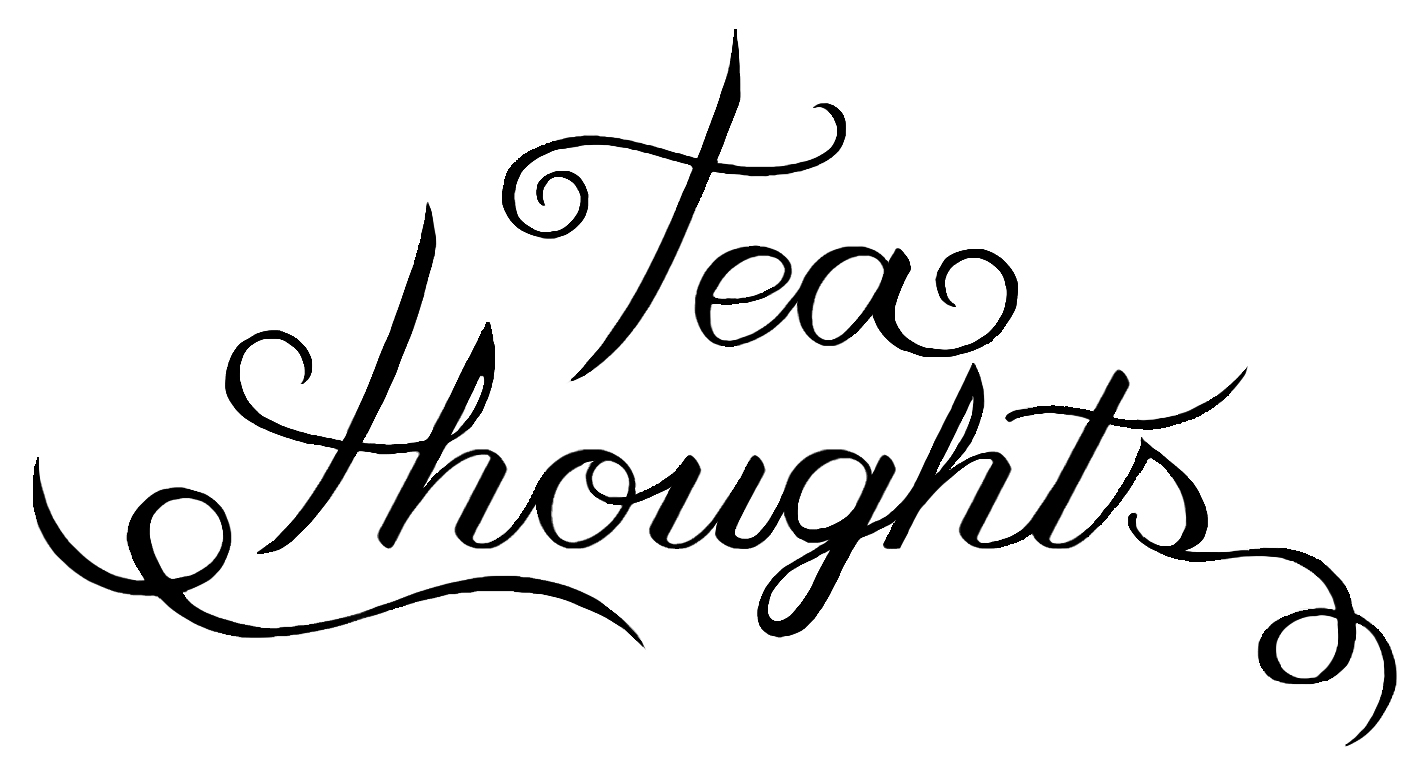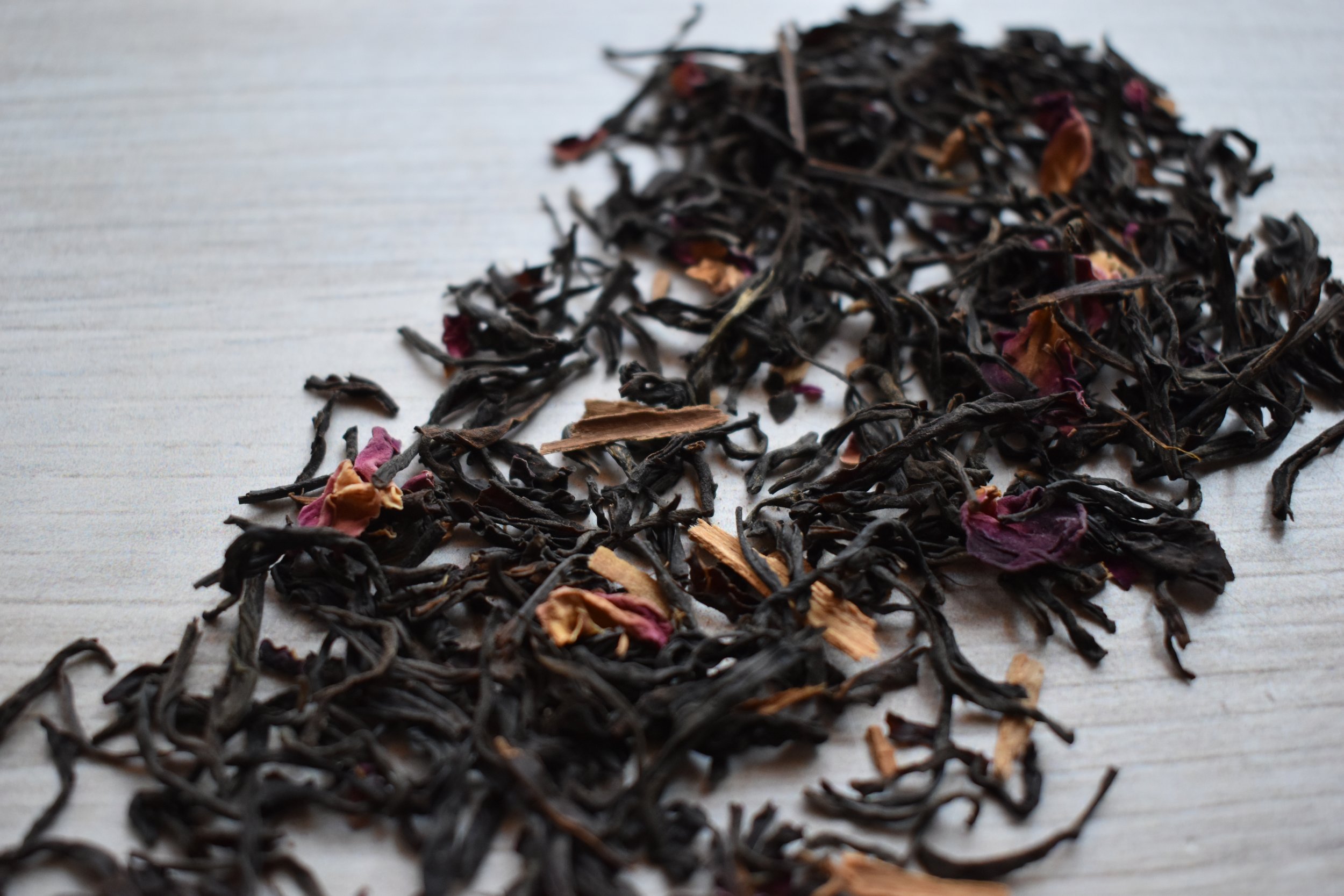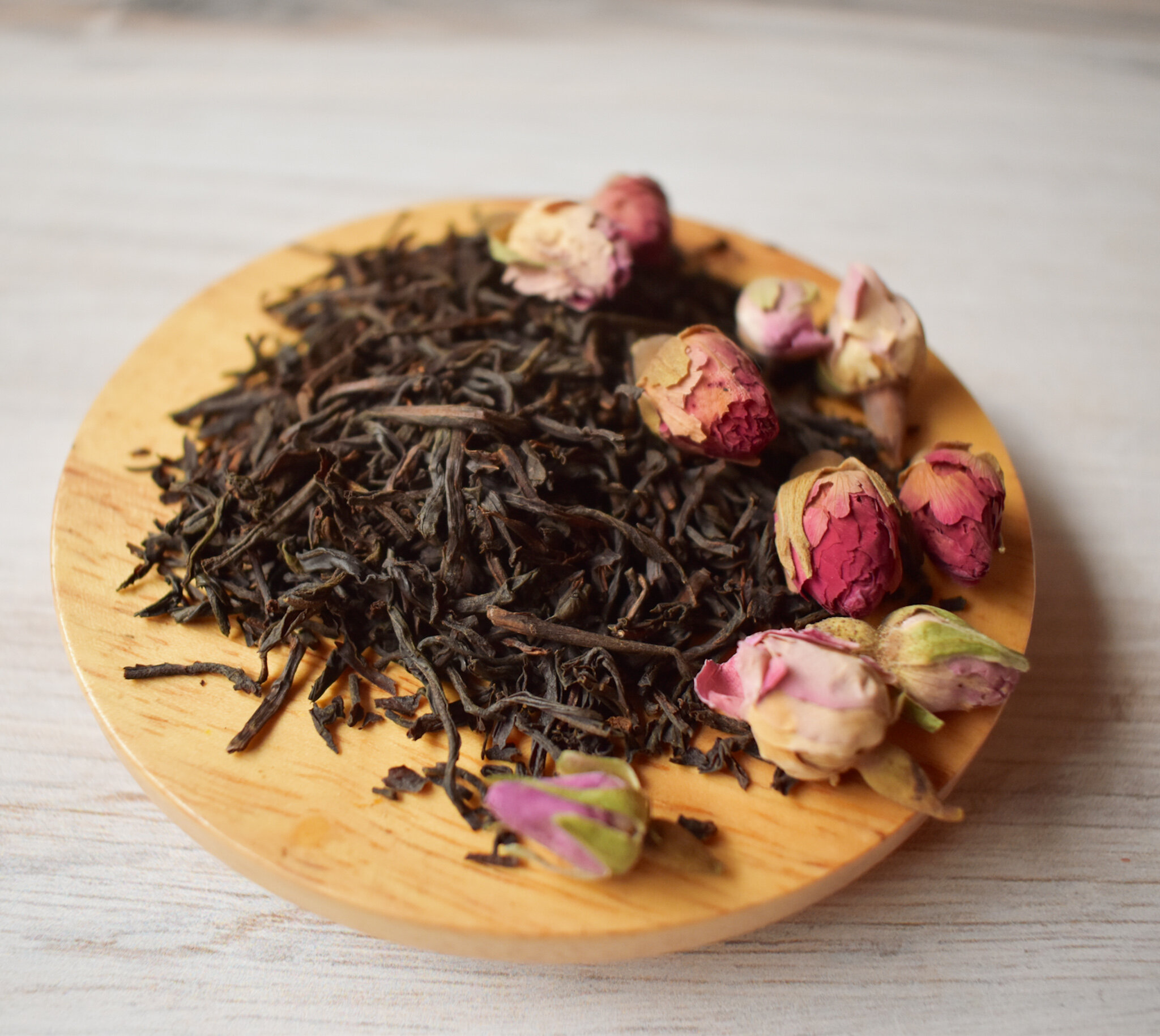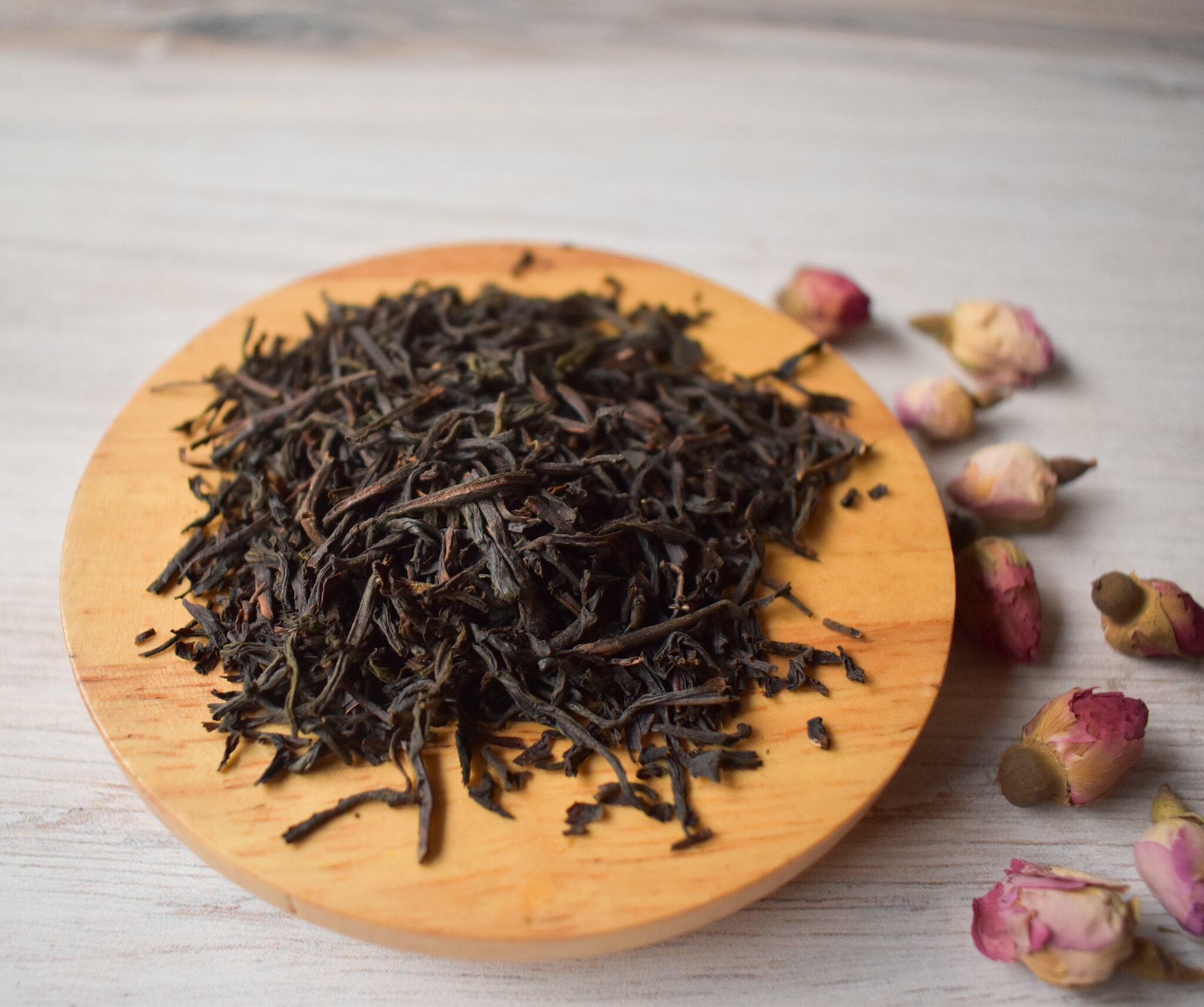Deltangam: The first tea for my shop
Since the start of Tea Thoughts, one of the most frequently asked questions is: do you sell tea? I understand to a point since there is the word tea in my name but it is something I have considered a lot.
I chose the name Tea Thoughts because it was alliteration and because at the time I was going to be writing about tea. I kept the name because I loved it and thought it would still fit well. I never desired to include tea in my shop but after the Nowruz box, everything changed!
BACKGROUND
I have often been asked to share more about my own culture and Persian heritage but have always been hesitant for two reasons. In my life, I have experienced negative reactions to this and also due to sanctions, using certain words that deal with Iran put me at risk of being shut down even though I am not in any violation. I have seen several businesses be cut off from their websites/payment processors for simply having the word Persian (not even Iran) on their site. Even when I paid for my blend, PayPal flagged the payment and it took several days to go through because it had the work Persian in it. Shafa mentioned that this happens anytime they use the word Persian. This is obviously a mistake of software but it is a real threat nonetheless and a deterrent for me.
Earlier this year, I did create a Nowruz box where I shared items and information about our New Year traditions and I was so happy that many people enjoyed it. From that time, I started thinking of ways that I could share more and also collaborate with other Iranian owned shops in the diaspora. At that time, what I came up with was 2 different Iranian owned shops in Canada and the US. They both focus on slightly different things and I thought it would be great to create a tea with them for my shop.
The first of which is Shafa Blends, they are located in Rockville, MD and are owned by an Iranian family! I came across them several years ago when they were at a different location and under a different name. I walked into a local mall on my lunch break to get a bite and saw a store called Rumi. I instantly freaked out! I went in to see a beautiful tea and spice shop and the Iranian family that owned it. I would often come during lunch breaks to buy tea or spices. They’re now Shafa Blends but are still creating incredible spice blends and have expanded their tea offerings as well! I was very excited that they were able to help me with the blend.
THE TEA
A blend may be an odd thing to add to my shop since it’s not something I drink a lot of but it’s actually something that is very much part of my tea drinking history. I grew up drinking black teas with bergamot oil which is a blend. I enjoy all the oolongs, white and pu’er teas that I’ve had that are mixed with different flowers. The thing I tend to stray away from are teas with flavorings as they don’t always do well on my palette, I’m very sensitive to those so I mostly stay away. I do enjoy teas that are blended with different ingredients like masala chai type blends!
My idea for Deltangam was at first something I went back and forth on. I wanted it to be a daily drinker type tea that is something like I drink everyday. This was a difficult task because the tea I drink everyday is pretty plain, just a ceylon with bergamot oil but I wanted to make it more interesting without overloading it. I started to brainstorm things that are very common in our culture and cuisine. The base is of course a black tea with bergamot. Not a ceylon which I was originally looking for but a tea that Shafa has and uses in some of my favorite teas. It has a similar aroma to my favorite tea and leaves that are a good size.
The first thing I knew I needed to add was rose. Rose is a very common ingredient, not only in tea but in food! Rose and rose water are included in many of our desserts and we even have our own rose! You will also notice if you search for persian tea blends that rose is almost always involved.
Rose can be controversial though since it has such a fragrant smell. Growing up, you learn tea preferences of family members as you learn to make and pour tea. I remember my uncle has a blend that he always serves and it is very floral and fragrant but my dad on the other hand can’t stand the teas he says smell like “perfume.” To not overpower the tea, rose petal pieces are used to give a hint of rose.
The second ingredient in this tea is ceylon cinnamon. Cinnamon is a commonly used in food but not tea so that’s the twist to this blend! Cinnamon is mostly used in sweet dishes like shole zard (a rice pudding) and to sautee meat in certain dishes. It’s this one ingredient that gives big flavor especially to beef (jn my opinion) and you can tell when it’s used. So why use this in the tea?
I wanted to make this tea blend unique, something you may not find but still have ingredients that are important to Iranian culture and cuisine. It is difficult to import Iranian ingredients so using what we have available is what we used. I also took into consideration the items that Shafa carries and uses in their own blends and spices which was important since I am collaborating with them. Ceylon cinnamon was my choice because it’s my favorite to use. While the fragrance is not always as strong as other cinnamon, the flavor is really nice with a bit of sweetness. In this blend you will find pieces of ceylon cinnamon as it’s more of a bark and easier to break up.
THE NAME
When deciding what to call this tea, I wanted it to first and foremost be something in farsi. I didn’t want it to just be named whatever was in the blend or even Persian blend since that is so common. We have a lot of sayings in Farsi that don’t really make sense in English but have deep meaning and are also used often in everyday speech. I was thinking of some of the most common ones and after consulting with my mom and sister, I decided to use “Deltangam.” This phrase literally translated means “my heart is tight” in English but in Farsi, it’s used to express longing for someone or something.
Growing up in the US with Iranian parents was always an interesting experience because I was taught language, culture and traditions from a different land but grew up in the US which has a very different culture. It was always a struggle to straddle being not quite American enough for Americans and not quite Iranian enough for Iranians.
Many of you are probably aware of the revolution currently happening in Iran, I try to share things about it almost everyday to keep it front of mind for non Iranians. This isn’t a new struggle, in fact Iranians have been fighting against the Islamic Republic since 1979. I’ve never been able to go to Iran for many complicated reasons, but much of it surrounds this current government, the way they rule and having a parent who needed to flee. Deltangam is a phrase I use for Iran. It’s a home that is mine ethnically, it’s a home that is mine in the stories my parents have told me but it’s a home I’ve never physically known. It’s something that not only makes me long for it but also breaks my heart. This tea and my love of tea in general is a love letter to Iran, where I hope all Iranians in the diaspora can go back to together one day.
If you’re wondering how to pronounce the tea, you can break down the word:
del - tang - am
Del: heart
Tang: tight
Am: this indicates the possessive subject like I’m
THE BREW
I’ve included brewing instructions on the tea that I think would be a common way to brew tea but also give you a taste of the way Iranians brew their tea. You can see this in the longer steep time of 5-7 minutes. The way tea was brewed in our house was with a modern samovar set up with a bottom boiling kettle and a top tea kettle. You will boil water in the bottom, then pour that water into the top tea pot with tea leaves. Instead of just leaving the top teapot to brew, you keep it on top of the boiling kettle teapot for a long time. I’m not exactly sure of the time but sometimes 10-15 minutes or more! What you get is a very strong brew that you can dilute somewhat with water if you want a weaker tea. For stronger teas, they are generally enjoyed with a sweet either sugar cube, rock candy, green raisins or other confections.
The 5-7 minute brew will hopefully allow you to experience a stronger flavor that you can have on it’s own or perhaps choose to sweeten. However, I encourage you to play around with it and perhaps you like a shorter brew or perhaps you want to use more tea depending on your teapot. I will mention that this tea isn’t really suited for gongfu brewing.
THE TASTE
The aroma of this tea is very interesting because it is somewhat spicy from the cinnamon at the start but you also get floral and bergamot on the back end. The taste has a nice sweetness from the cinnamon on top of a classic earl grey type flavor but more complex due to the rose. It’s nice on it’s own but I suggest you try it with honey or sugar to taste as well!
I don’t expect everyone to like this tea. I’m not a master blender and this is an experiment of sorts. I’ve blended together ingredients that are meaningful to me and I don’t expect that to be everyone’s cup of tea. Although, I do hope you enjoy it :)
THE PRICE
I will be listing this tea for $16 in the shop and each bag has about 1 oz of tea. The pricing here reflects the fact that this is a collaboration and that I purchased the tea instead of sourcing directly. If the response is good, I will restock in larger amounts and also change the packaging to include a 2 oz package size.
My Persian tea traditions
If you follow me on instatgram, you’ll notice that I mostly share my gongfu style brewing sessions but that isn’t the only tea in my life! I share about that most often because it is newer to me and I am still finding out so much about tea through that style of brewing. I also want to share so that more people will try it! Please note that Persian tea culture encompass many different traditions and I am just sharing what my family practiced, it is not the end all be all.
Many people ask me when I started drinking tea and the answer is young. I don’t remember exactly what age but it was definitely in the 5-7 range. Most mornings we would eat noon-paneer (sheep milk cheese bread and walnuts) and sweet tea! This isn’t exactly sweet tea like in the south. The way the tea is brewed is very strong so we often would drink tea with a little sugar. The way I have shared before was with a sugar cube that you place in your mouth and keep there so as you drink, each sip is sweetened. I’m going to share some other ways we sweetened our tea too!
Let’s get down to the tea first. In my household and most Persian households, you will find black tea as the staple. While the type can vary, I feel like most of my family drinks exclusively ceylon. Below is a photo of the tea that I drink every morning. It’s from quality tea co and it’s called “best tea” which I personally find very fitting. As you can see it’s a loos leaf ceylon and compared to some ceylon that is a bit more broken up, this has relatively longer leaves. I do notice that the size of the leaf varies between sizes of packages I buy.
This tea is tossed with bergamot oil. You’re probably thinking, oh so it’s an earl grey. Not quite. I’m not sure the difference because I’ve had other ceylon earl greys and they just do not compare to this. The aroma is so lovely and reminds me of my childhood and grounds me every single morning.
I brew this plain with a little honey because it’s the only tea I like sweetened, I think out of habit but there are times that other ingredients are put into the tea!
Rose and rosewater are common ingredients in Iranian food and sweets. I have had this tea prepared with rose and rosewater. While I love rosewater in sweets, I prefer the whole rosebuds. I often see tea companies that have “persian rose” type tea blends use rose buds as well. I throw a few rosebuds in sometimes when I brew. Growing up, we rarely had this type of tea at our house because my parents liked it more plain but some of my relatives would brew it this way when we would visit. A visit to my relatives consisted of walking through the door, tea would be ready or almost ready and everyone would grab a cup and sit down to talk.
One other way that I did have it sometimes but it was rare was with saffron. Saffron is another common ingredient in both sweets and our dishes. I for example use saffron every day when I cook. Sometimes you will see this tea with saffron threads brewed in it. It seems that some Persian/Iranian restaurants you go to serve tea this way to share a more unique experience.
Now onto the brewing. Iran wasn’t always a tea drinking country. They were actually majority coffee drinkers until the 15th century so it’s no surprise that we like our tea STRONG. Most Persian households will have a ghouri or samovar. I do not have one only due to space, once I have more space I will be getting one first thing! If you’ve never seen one, it’s basically a double decker set up with the bottom being the water kettle and the top being the tea pot. See a simple example below.
If you look back to more historical ones, they are very decorative. You can find some like that nowadays, we have a few that my family was able to bring from Iran. Many modern ones are free standing and plug in instead of using the stove.
Essentially how this works is that you boil the water in the bottom kettle then you pour the boiling water with tea in the top one. Then you put both back on the stove and let it brew until it’s super strong! While I do enjoy tea this way, it definitely doesn’t follow brewing instructions and is probably burning the tea some :D
The other thing to know when serving tea is “kam rang” and “Poor rang” which is basically like lighter or darker tea. As a kid, one of your tasks is to learn to make and serve tea to your family! I’ve shared before that my mom had a loving nickname for me “kolfat chai” which is like tea butler LOL. So since the stronger tea is in the top and you have water in the bottom, someone who wants a weaker tea you might pour half brewed tea half water and change it up for a stronger tea. Many people just like to have a cup full of the top kettle. This double feature also allows you to keep the tea hot or reheat easily.
The other usual way we enjoyed tea growing up was in small glasses. These are Turkish glasses that my sister brought home for me on a trip but persian ones are very similar. some have handles even though they are smaller but many don’t. Generally you would have several glasses of these smaller cups. Nowadays, I drink my morning and evening tea out of glass too but they are larger and with a handle. This is out of convenience.
A lot of households would have these turkish style tea cups as well as Persian ones. One style that I often saw growing up and I recently ordered myself are cups that feature Shah Abbas or Abbas the Great who was considered one of the greatest rulers in Persian history.
The first sweetener I wanted to share with you is “ab nabat” which I believe is what you call rock candy in English. The rock candy we had wasn’t artificially colored and usually wasn’t on a stick. It was either normal colored or tinted slightly because it was infused with saffron. This one pictured is held together by a string that you’ll find once it melts. Ab nabat was my parents cure all for stomach aches. They would put it in either tea or hot water and it always worked! It was also one of my favorite ways to sweeten my tea when I was younger if we had it.
This other method may be somewhat strange but it’s actually great, raisins! Instead of darker raisins, we use green ones and they were always a bit dryer and longer. These are a little tart but also very sweet and having them alongside your tea sweeten it up! These were often used as the”healthier” version to the sugar cubes or ab nabat.
Which would you choose? Rock candy or raisins?
If you’re interested in checking out some options, I created a list that has some options. Please note that if you purchase any of these items through my link, I will earn a small comission at no extra cost to you.








